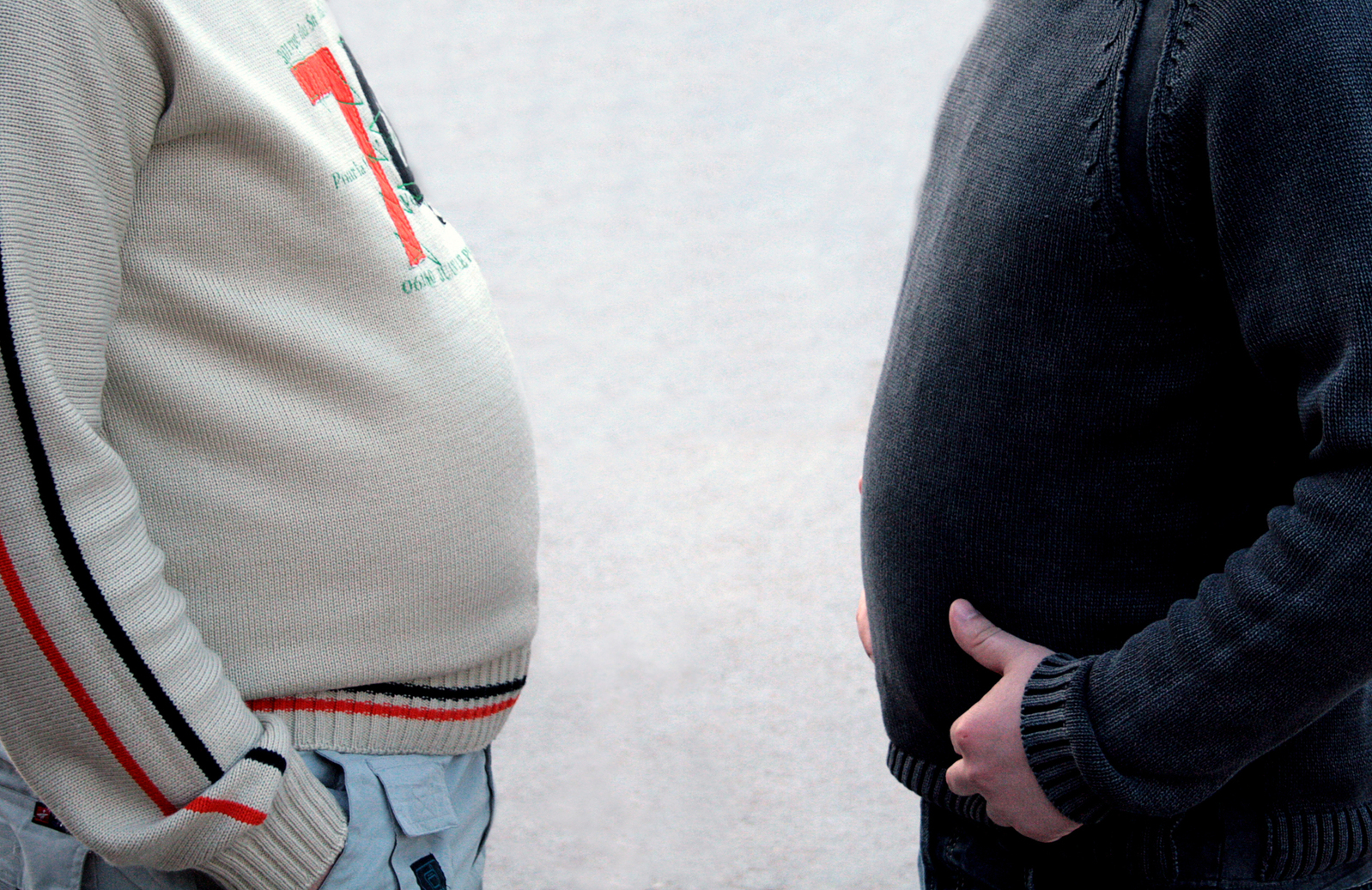By Steven Reinberg
Frank’s Comments:
OK – this is yet another article backing the idea that the fastest way to beat metabolic syndrome and type-II diabetes is to build muscle while relearning how to eat correctly for true health. What is needed is a serious, high intensity, weight training program that will change the body chemistry in favor of building significant muscle, coupled with eating such that the body will burn fat for energy. So eat smaller meals, no more than 3 times a day, about 6 hours apart, with no snacks or caloric drinks between meals (water only), drop most manufactured food products for real meats, eggs, vegetables, fruits, fish, foul, organic if you can afford it, dump most starches and things that turn to sugar, and eat nothing after dinner/before bed. If you are overweight, this is the real answer, and you will see results in body fat loss and improved medical test numbers.
Study finds risk of cardiovascular death highest in those with ‘central obesity.’
TUESDAY, Aug. 28 (HealthDay News) — People who have a normal weight but have excess belly fat may have a higher risk of dying from heart disease than even obese individuals, researchers report
In a new study, investigators found that normal-weight people who have what is called central obesity are at almost three times greater risk of dying from heart disease and two times greater risk of dying from any cause than those of normal weight with a normal waist-to-hip ratio
“People with normal weight may be less likely to feel the need for lifestyle changes,” explained lead researcher Dr. Francisco Lopez-Jimenez, a cardiologist at the Mayo Clinic in Rochester, Minn. “But, central obesity isn’t healthy even in those with normal weight.
There are several reasons why central obesity may raise the risk of death, Lopez-Jimenez said. It increases insulin resistance, and people with central obesity tend to have less fat in areas where fat might be protective, such as the hips and legs, he said. People with central obesity also tend to have less muscle mass
For obese people, some of the risk is tempered by fat distribution, Lopez-Jiminez noted. Obese people tend to have fat in those places where it may be protective, and they tend to have more muscle mass, he explained
For normal-weight people with central obesity, the only way to reduce the risk is to lose weight and build muscle mass, Lopez-Jimenez said, so that the weight is redistributed
“A healthy diet and exercise are the way to treat this problem. You do both, lose weight and build muscle mass,” he said
The findings were presented Monday at the European Society of Cardiology Congress in Munich, Germany. Research presented at medical meetings should be viewed as preliminary until published in a peer-reviewed medical journal
For the study, Lopez-Jimenez’s team collected data on more than 12,000 men and women in the United States who took part in the third National Health and Nutrition Examination Survey
As part of the survey, participants had their weight, height, waist and hip size measured. In addition, the researchers matched data from the survey with the National Death Index
Over 14 years of follow-up, more than 2,500 people died. Of those, more than 1,100 deaths were due to cardiovascular disease
Lopez-Jimenez’s group found the risk of dying from heart disease was 2.75 times higher, and the risk of dying from any causes was 2.08 times higher among those of normal weight with central obesity, compared with people of normal weight and normal waist-to-hip ratio
To make sure their results would reflect body type, the researchers excluded anyone in the survey who had cancer or chronic obstructive pulmonary disease. They also took into account age, sex, race, smoking, high blood pressure, diabetes and high cholesterol
Commenting on the study, Dr. Gregg Fonarow, a professor of cardiology at the University of California, Los Angeles, explained that “central obesity is the presence of excess fat in the abdomen. In this condition, the amount of fat deposited in the abdomen is out of proportion to total body fat.
Many studies have shown that central obesity is independently associated with the increased risk of cardiovascular events, Fonarow noted
“In some studies, waist circumference or waist-hip ratio is a better predictor of risk than body mass index,” Fonarow said. Body mass index is a measurement based on a person’s height and weight only
“In this new study, men and women in the normal body mass index category, but with increased waist-hip ratio had the highest cardiovascular mortality risk, even higher than those classified as obese by body mass index. This increased cardiovascular risk remained evident after risk factor adjustment,” he added
“This study further highlights the dangers associated with excess fat in the abdomen,” Fonarow said
While the study reported an association between belly fat in normal-weight people and risk of death from heart disease, it did not prove that a cause-and-effect relationship exists
To determine your hip-to-waist ratio, visit the University of Maryland.
(SOURCES: Francisco Lopez-Jimenez, M.D., cardiologist, Mayo Clinic, Rochester, Minn.; Gregg Fonarow, M.D., spokesman, American Heart Association, and professor, cardiology, University of California, Los Angeles; Aug. 27, 2012, presentation, European Society of Cardiology Congress, Munich, Germany
Copyright © 2012 HealthDay. All rights reserved.

